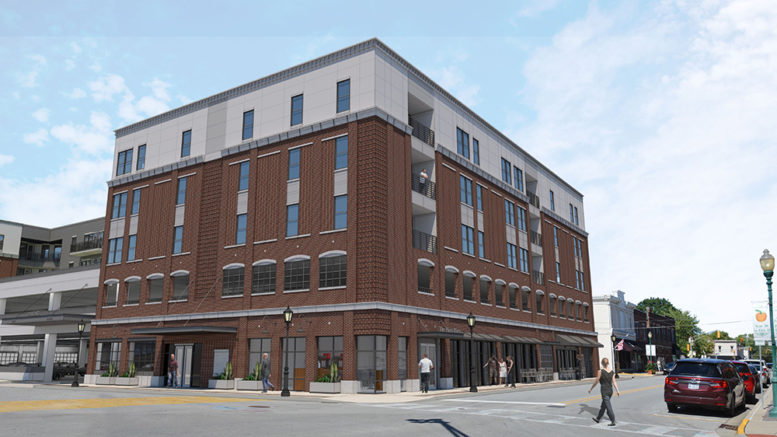Noblesville Deputy Mayor
 The Levinson construction is getting underway in downtown Noblesville. City officials have been working with Rebar Development and our community partners to help minimize the impact from construction on public parking.
The Levinson construction is getting underway in downtown Noblesville. City officials have been working with Rebar Development and our community partners to help minimize the impact from construction on public parking.
Check out NoblesvilleNOW.com and follow us on Facebook and Twitter to get the latest updates, and help share our downtown parking map to alleviate the inconvenience from the construction.
We look forward to the day when we can add 83 high-end apartments, a 300-space parking garage and 5,000 square feet of commercial space. However, before we break ground on this transformative project that will help support and sustain our downtown well into the future, it’s important to remember our past – and how we got here.
Many residents are curious about what the excavation may uncover once it begins. Fred Swift devoted a column in the Hamilton County Reporter to this topic on Aug. 25, 2018, when he asked, “What lies beneath new project site?” The city plans to dedicate a display in City Hall about the Levinson construction and showcase any interesting artifacts.
The half-block area where the Levinson will be constructed on Maple Avenue between 8th Street and 9th Street has served many purposes throughout our history. The site evolved over time from the days of The Wild Opera House facing 9th Street, which stood from 1895 to 1959, and the Houston Hotel on the corner of 8th Street and Maple Avenue that was built in 1898, but burned down in 1984.
Even during the Wild Opera House’s lifetime, its use changed over time as well. Built for stage productions, the Wild was converted to mostly show silent movies in 1919 before eventually transitioning to “talkies,” but closed as a full-time movie theatre in 1936.
The current structure at Maple Avenue and 9th Street was originally envisioned as a 50-foot-tall, four-story hotel – but the builder’s plans got downgraded. Ownership has changed hands over the years as well, along with the buildings’ facades. Previous occupants included a telegraph office, a telephone exchange, an electric railway company, a music store popular with musicians, and lastly, attorney and real estate offices.
The evolution of Noblesville on this half-block of downtown has included two different city hall buildings, the first constructed in the 1870s and the second in 1954, until City Hall was relocated in the 1980s to its current site, repurposing the old Carnegie Library that had been built in 1912. Police and fire departments also moved – but across Maple Avenue to where they stand today, occupying the former U.S. Post Office building.
Delving into this history proves that change has always been part of Noblesville’s past – it’s a sign of the community’s growth. But that doesn’t mean we have to forget our history. In fact, the 1950s-era City Hall sign that once stood over the entrance of that building, and is currently facing 8th Street, will continue to be preserved. The sign and much of the brick work from the two buildings on Maple Avenue that will soon come down will be incorporated into the Levinson’s interior.
These are some of the ways the city and Rebar Development are honoring Noblesville’s past while moving forward with downtown’s first apartment building in more than a century.
Another way we are honoring history is by the name of the project itself, which we were fortunate to learn about from county historian David Heighway. The Levinson family homestead stood on 8th Street and was described in a Noblesville Ledger article from Feb. 23, 1938, as a landmark of the community during its heyday and “at one time the center of many social events and charity programs.”
The Levinsons emigrated from Germany and settled in Noblesville in 1857 to open a successful clothing shop that operated on the square for more than 40 years. This prominent Jewish family gave much of their time, attention and money to important causes and community endeavors – including funds for a new high school gymnasium, a high school scholarship and construction of Forest Park to name a few.
According to the Ledger, with the donation of their homestead in 1938, the “property belongs to the city and perhaps some way may be arranged to commemorate the memory of this popular and helpful family of the early days of Noblesville.”
Their memory deserves more than a parking lot. As the project bearing their name rises from the ground, the Levinsons will be remembered forever for their service to the community in which they lived, worked, raised two generations and gave so much of their success back to Noblesville.
I am proud that the City of Noblesville is both making history with this project as well as honoring our history for generations to come.

